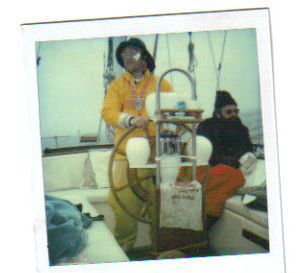#MedicalKit
“It is just a Band-Aid”
When someone wants to say that something hasn’t really been fixed, they often say, “They just put a Band-Aid over it.” Band-Aid, which is a brand name, realized that they could do better themselves and the new water-proof Band-Aids, on the market now for a few years, are dramatically better than the old version. There is a semi-permeable membrane over sterile gauze. This makes them waterproof and breathable. Wounds need that in order to stay clean and yet be warm and moist enough to promote circulation and healing. These new Band-Aids, and 3M’s “NexCare”, are roughly 2x as expensive but worth every penny in healing and prevention from infection.

These are fine for cuts and punctures but, if you have blistering on your hands from a burn of some type, you’ll need something that has medical product directly integrated into the dressing, and still breathes too. Such a product would be Band-Aid’s Advanced Healing Blister Cushion. Not all burns come from fire – think about putting your hand on a hot exhaust pipe or having a line run through your ungloved hand at a high rate of speed… Allevyn and Duoderm have similar products and all can last for several days in place if need be.
Liquid Dressings?
Many of us have heard of the use of SuperGlue as a liquid dressing/ersatz stitching. It is clever, other than the fact that the SuperGlue itself comes with a warning that says that it is toxic. NewSkin and Dermabond are liquid bandage products that are designed for the same purpose but don’t sport a warning label that says “toxic!” I have no experience with these products under maritime conditions, but I have heard some skippers note that, under harsh conditions, “the stitches come out…”

Pain Killers?
If you are going to keep anything aboard stronger than Tylenol, you’ll need a doctor’s prescription to buy it and training how to administer it. Daunting… With that said, many Search & Rescue teams both at the ski patrol level and on-the-water are opting for “fentanyl” – it is sprayed in the victim’s nose where it is fast acting but short-duration. You’ll still need medical training and prescription processing but, in lieu of giving someone a needle injection with morphine for a crushed leg from a shark bite, this might be something for the right skipper with the right profile to look into.
Assists?
Need some help out there? Don’t forget some low-tech devices – such an otoscope (the thing the doctor sticks in your ear during an exam.) “Dr Mom” offers a cheap, lightweight and stainless-steel model with LED light. Great for fine print, finding splinters and a bit of barnacle that embedded itself in your finger.
What do you do if someone needs artificial respiration? First, I hope you’re up to date on your Red Cross First Aid training. If not, “Google” it and get into a class. In addition to getting good solid training on medical “tech”, you’ll be properly trained in CPR, including artificial respiration. And when you train for that, one of the key items is something between your mouth and the victim’s. Only when “in extremis” do we bypass modern day sanitation and body-fluid control – and one device you might want to have aboard is the NuMask. It fits inside the victim’s mouth like a snorkel rather than over the face like a mask.
In summary, you don’t have to stop at the over-the-counter medical kit. You can take your skippering skills to the next level. Remember, you are responsible for the crew, the boat and the boat’s wake.
None of the products mentioned, btw, imply a USCG endorsement. You need to investigate the options yourself and, if you go the prescription route, consult with your physician.
